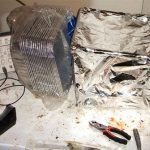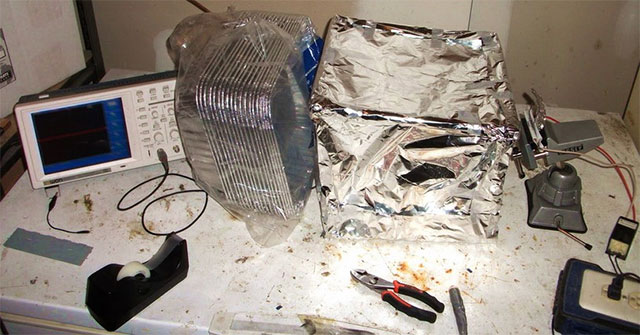
Prepper projects: Do you need to keep a Faraday cage grounded?
Tuesday, July 16, 2019 by Edsel Cook
http://www.emp.news/2019-07-16-do-you-need-to-keep-a-faraday-cage-grounded.html

A Faraday cage protects electronic equipment from powerful bursts of electromagnetic radiation. Grounding the cage maximizes its effectiveness by directing excess electromagnetic energy into the ground where it cannot harm anything.
Powerful lightning, nuclear detonations, and the sun release large amounts of electromagnetic energy. When this energy hits an electronic device, it induces considerable amounts of voltage that exceed the maximum capacity of the appliance.
An overloaded device takes severe damage from the sudden spike in voltage. It might even get destroyed.
Electronics run almost every aspect of modern-day living. An electromagnetic burst can disable or destroy the electronic devices, thereby disrupting the services they provide.
There are two ways to protect vital electronics from massive discharges of electromagnetic radiation. One is to harden the device so that it can survive exposure to high levels of electromagnetism.
Hardened systems tend to be older technologies or military-grade equipment. It is difficult and expensive to harden modern electronics. Most devices are engineered from light materials and do not have the space to fit insulating material.
The other method sets up electromagnetic shielding around an object. A Faraday cage falls under the second approach. (Related: A basic guide to surviving an EMP attack.)
Building the Faraday cage to shield electronics from electromagnetic radiation
A Faraday cage is an enclosure made from conductive materials. It diverts incoming electromagnetic waves and static discharges to its sides.
The electronic device gets stored inside the cage. It must not come into direct contact with any part of its enclosure. Otherwise, it will end up channeling the destructive energy it is trying to avoid.
As long as it doesn’t touch the interior, the electronics get shielded from electromagnetic radiation outside the cage.
One example of a Faraday cage is a microwave oven. Preppers may convert an old unit to protect their electronic devices.
Or they may build a cage out of scratch. A military surplus ammunition box wrapped in tin foil works quite well. There are even Faraday bags.
However, electromagnetic energy continues to spread until it reaches earth ground. Only then can it dissipate harmlessly.
The Earth can hold an infinite amount of electrical current without increasing its neutral voltage. Any electromagnetic energy that hits earth ground will disappear.
Unless that happens, electromagnetic energy will keep flowing around the Faraday cage. It may find an opening and enter the enclosure, destroying the electronics inside. Therefore, a cage must be grounded.
How to properly ground a Faraday cage
Get a rod made of conductive material. Drive it into the ground at a depth shortly above damp earth. Then attach it to the Faraday cage using a grounding wire. The rod serves as the earth ground.
The larger the Faraday cage, the more energy it diverts through the grounding wire and into the earth ground. The wire needs to be thick and sturdy. Use battery jumper cables or other wires of similar thickness.
The structure may happen to feature copper plumbing. The plumbing acts as a good earth ground. In this case, attach the grounding wire to this instead.
Make sure the electronic equipment is not touching any part of the Faraday cage. Place the device inside a container made from a non-conducting material.
Next, put the box inside a plastic bag. Store the entire thing inside the cage alongside a desiccant bag.
Copper is the best material for a Faraday cage. It is plentiful, easy to obtain, and conducts electricity efficiently.
If copper is not available, use much larger quantities of alternative alloys like aluminum, brass, steel, or tinfoil. Thicker layers will compensate for their lower efficiency at conducting energy.
Sources include:
Tagged Under: Tags: bug out, electromagnetic pulse, electromagnetic radiation, EMP, Faraday cage, homesteading, how-to, off grid, preparedness, prepper, prepping, SHTF, survival, survival gear, survival tools





